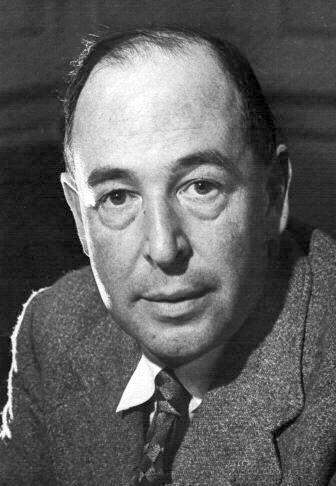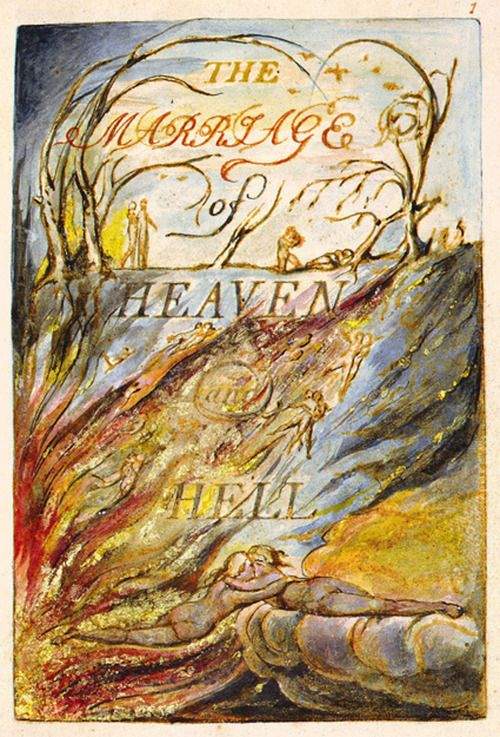
C. S. Lewis and Introduction to The Great Divorce
C. S. Lewis (1898–1963)

Although English author C. S. Lewis did not convert to Christianity until the midpoint of his life, he is remembered not only as one of the greatest British writers of the modern era but also as one of the greatest Christian apologists of all time. Lewis, who worked as a professor of English literature at both Oxford and Cambridge, wrote theology, fantasy, science fiction, and autobiography; he wrote essays, novels, children's books, and academic articles.
Lewis' early atheism, experiences in WWI, and academic background keep his writing grounded and rational. And yet Lewis was enchanted with the "true myth" of Christianity; his works reflect the joy he received from his Christian faith.
Read this short biography of Lewis.
"C. S. Lewis: A Profile of His Life"
Christian History Magazine
CLICK HERE(OPENS IN A NEW TAB)
Introduction to The Great Divorce (1945)
The Great Divorce combines Lewis' love of theology and vivid imagination into one intense dream vision.
Dream vision: A literary device in which a dream or vision is recounted as having revealed knowledge or a truth that is not available to the dreamer or visionary in a normal waking state; the story is often an allegory
Famous dream visions you may have read include The Dream of the Rood, John Bunyan's Pilgrim's Progress, and James Joyce's Finnegan's Wake.
Sometimes the speaker states right away that the story is a dream; sometimes, they recognize the dream state at the end of the work. The speaker in The Great Divorce believes he has died and gone on to the afterlife until the very last chapter when someone tells him he is dreaming.


The vision takes place in Hell (or Purgatory, or the Valley of the Shadow of Death) and a heavenly country that is not quite Heaven (at one point, it is referred to as the "Valley of the Shadow of Life"). The narrator watches as the ghosts of the dead arrive in the heavenly country and usually turn back toward Hell, too addicted to lust or power or academia or self-pity to embrace the joyful realities of God.
The Great Divorce may seem like an odd name for a vision of the afterlife; however, it is an intentional counter to English poet William Blake's idea of Heaven and Hell forming a union in his collection, The Marriage of Heaven and Hell. Over and over in The Great Divorce, Lewis illustrates his belief that Heaven and Hell can never and will never be reconciled. To him, Hell is the absence of God and the perversion of every good thing. In the end, every person must choose for him or herself in which place they want to belong.
Before you dive into this fascinating dream vision, let's first read Lewis' preface to the work.
Lewis's "Preface" to The Great Divorce
Posted on The Spiritual Life Network
C. S. Lewis and Introduction to The Great Divorce
C. S. Lewis (1898–1963)

Although English author C. S. Lewis did not convert to Christianity until the midpoint of his life, he is remembered not only as one of the greatest British writers of the modern era but also as one of the greatest Christian apologists of all time. Lewis, who worked as a professor of English literature at both Oxford and Cambridge, wrote theology, fantasy, science fiction, and autobiography; he wrote essays, novels, children's books, and academic articles.
Lewis' early atheism, experiences in WWI, and academic background keep his writing grounded and rational. And yet Lewis was enchanted with the "true myth" of Christianity; his works reflect the joy he received from his Christian faith.
Read this short biography of Lewis.
"C. S. Lewis: A Profile of His Life"
Christian History Magazine
CLICK HERE(OPENS IN A NEW TAB)
Introduction to The Great Divorce (1945)
The Great Divorce combines Lewis' love of theology and vivid imagination into one intense dream vision.
Dream vision: A literary device in which a dream or vision is recounted as having revealed knowledge or a truth that is not available to the dreamer or visionary in a normal waking state; the story is often an allegory
Famous dream visions you may have read include The Dream of the Rood, John Bunyan's Pilgrim's Progress, and James Joyce's Finnegan's Wake.
Sometimes the speaker states right away that the story is a dream; sometimes, they recognize the dream state at the end of the work. The speaker in The Great Divorce believes he has died and gone on to the afterlife until the very last chapter when someone tells him he is dreaming.


The vision takes place in Hell (or Purgatory, or the Valley of the Shadow of Death) and a heavenly country that is not quite Heaven (at one point, it is referred to as the "Valley of the Shadow of Life"). The narrator watches as the ghosts of the dead arrive in the heavenly country and usually turn back toward Hell, too addicted to lust or power or academia or self-pity to embrace the joyful realities of God.
The Great Divorce may seem like an odd name for a vision of the afterlife; however, it is an intentional counter to English poet William Blake's idea of Heaven and Hell forming a union in his collection, The Marriage of Heaven and Hell. Over and over in The Great Divorce, Lewis illustrates his belief that Heaven and Hell can never and will never be reconciled. To him, Hell is the absence of God and the perversion of every good thing. In the end, every person must choose for him or herself in which place they want to belong.
Before you dive into this fascinating dream vision, let's first read Lewis' preface to the work.
Lewis's "Preface" to The Great Divorce
Posted on The Spiritual Life Network
 Knowt
Knowt